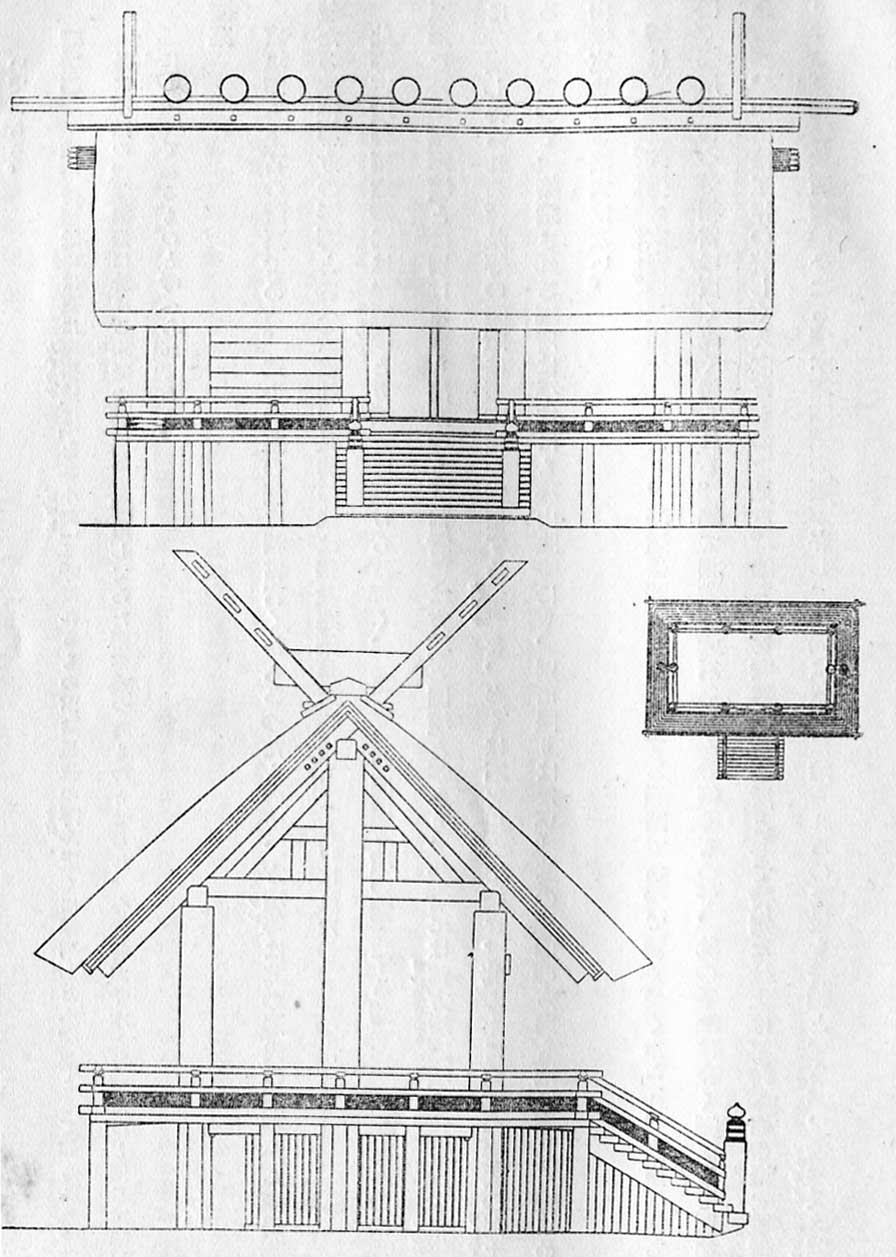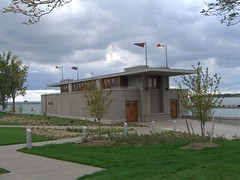A recent discussion on Twitter led me to think about the practice of reconstructing buildings that have been demolished. There are currently discussions about rebuilding the Euston Arch in London. It once stood as a gateway to the North, as Euston Station was the terminus of the London and Birmingham Railway, and it mirrored a similar arch at the other end of the line in Birmingham. Demolished when the station was rebuilt in the 1960s, it has been a sore issue amongst architectural preservationists for the past fifty years. Many people actively tried to save the Arch at the time, but were unsuccessful as British Rail was determined to move forward with plans for the new station and relocating the Arch would have cost them far more than demolishing it.
Interest in rebuilding the arch gained favour after Dan Cruickshank, an architectural historian, professor and BBC television presenter, discovered its remains in the River Lea in the East End. Cruickshank founded the Euston Arch Trust. This organisation’s goal is to rebuild the arch at Euston, most likely as part of the planned station redevelopment. There is a heavily produced video (with music) of the proposed redevelopment of the area by Sydney and London Properties here.
My initial reaction to the idea of rebuilding the arch was that it was an absurd waste of resources- let the past be the past, accept that it is gone and move on.  In the aforementioned Twitter discussion, Will Wiles went even further- he’s proposed a counter-campaign to re-demolish the arch, complete with T-shirts.
Rebuilding the arch  Post-Postmodernism to me: a piece of non-ironic yet nostalgic pastiche that takes liberties while framing itself in an air of authenticity. It is symptomatic of what Raoul Eshelman defines as performatism in his essay “Performatism, or the End of Postmodernism“. While Eshelman’s sole architectural example is Sir Norman Foster’s Reichstag in Berlin, I believe a reconstructed Euston Arch would fit the bill precisely because it is being promoted as “real” – and not merely a historicist recreation of the past. By dredging the river and incorporating actual stones, the rebuilt arch results in exactly the type of  “perfomative, authorial framing” Eshelman refers to in his essay. I am not particularly a fan of Post-Postmodernism, so this certainly does not swing me over to the side of the rebuilders.
On the other hand, there is a precedent for recreating buildings that I have always found fascinating. The Ise Shrine in Japan is rebuilt every twenty years, in exactly the same manner and materials each time. The new shrine is built adjacent to the old one and then the old one is dismantled when the new one is complete. The present shrine is the 61st iteration, and a new one is due in 2013. By rebuilding, the shrine is always new yet is ancient at the same time.

Perhaps the Euston Arch is operating on a slightly different cycle, and instead of the overlap experienced at Ise, there is a lag where the Arch disappears only to make a triumphant return after a lengthy absence?  The Euston Arch could always be new upon its appearance, and watching it be demolished would be part of its rebirth.
On a final note, I am somewhat sympathetic to rebuilding because I admittedly enjoy a number of buildings that have been built out of their proper historic context. This Frank Lloyd Wright-designed boathouse in Buffalo, New York was built long after FLW passed away. Designed for a site in Wisconsin in 1905, it was built in Buffalo in 2007 (and it’s not the only Wright reconstruction in the area) and my wedding reception was held here last summer. Architects don’t build their buildings, architects produce drawings for someone else to use to construct a building. This mediated relationship to the final product means that you don’t really need to see the artist’s hand in the work- rebuilding a building, if done properly, is not much different than building the original and is far different from recreating a painting or sculpture which is dependant on the presence of the artist. Perhaps if Preston’s gorgeous brutalist bus station is demolished, we could rebuild it at Euston as well?

